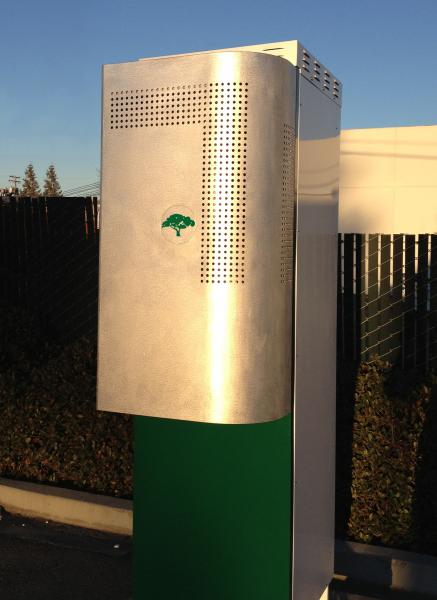Green Charge Networks, a smart energy storage startup based in Silicon Valley has secured $10 million from TIP Capital, an energy efficiency financing provider, to offer its customers the energy storage equivalent of a solar power purchase agreement (PPA).
By applying this tried-and-true solar financing model to energy storage, Green Charge aims to open up a wider customer base for its GreenStation, which works like a micro-scale peaker plant using lithium ion batteries. Similar to other companies offering intelligent customer-sited energy storage, such as Stem, the battery deploys stored energy during peak demand times, when the utility charges a premium for energy, and recharges the unit during off-demand periods.
The software component offers predictive analytics using utility and weather data to manage peak power use and store energy accordingly. The software is where Green Charge distinguishes itself from comparable systems. Green Charge Networks CEO Vic Shao told CleantechIQ that they’ve integrated more software into the system in order to reduce the size of the battery.
CEO Vic Shao on how Green Charge shrinks distributed energy storage through software (an exclusive interview by CleanTechIQ at the recent Cleantech Innovation Summit):
The Financing Frontlines
Green Charge’s move to offer customer financing is not new to the energy storage space. Last October, Stem announced it had raised a $5 million project finance fund from Clean Fleet Investors to finance up to 15 megawatts (MW) of systems. The industry viewed this as a big step forward for making on-site storage affordable, as solar and efficiency retrofit providers have done before them—and now with Green Charge’s $10 million fund a real trend appears to be taking shape.
Green Charge’s municipal, industrial and commercial customers that elect to sign up for financing can expect terms between 3 and 20 years for projects that range from $3,000 to $5 million. The financing, which is paid back though energy savings, covers all costs of equipment and installation.
Regaining Lost Costs of Energy Use
Green Charge’s target customers are the commercial and industrial energy off-takers whose demand charges add up to 50 percent or more of their bill. Some customers pay as much at 70 percent in demand charges. Current customers include 7-Eleven, Walgreens, as well as colleges and municipalities.
“So it’s not the kWh that they consume, but it’s how big the pipe is that’s going into their facilities,” said Shao. “And that pricing, the dollar per kWh pricing, has been trending up on both coasts at 7 percent a year while energy prices have actually gone down. So, dollar per kilowatt is really the next frontier in savings.”
By “next frontier,” Shao is referring to power efficiency and the 15 percent cost savings he says Green Charge can achieve with the GreenStation that comes from the protection it provides against rising demand charges.
CEO Vic Shao on why corporate customers need energy savings through “power efficiency”:
Eye on California and New York
Green Charge is focused on the California and New York markets for now. This bodes well for the company, considering the 1.3 GW energy storage target that California recently put in place and New York’s plan to offer a self-generation incentive plan. According to the U.S. Department of Energy’s global storage database, Green Charge has 14 projects currently under construction: 10 in California and four in New York that include additional 7-Elevens, Walgreens and various municipal and commercial customers.
The company plans to grow from its current 1.5MW roster of projects to 5 MW by the end of the year. Shao also said that the company is looking to raise venture capital investment as they focus on “scaling up the business.” He said the company is on a “steep ramp” as they have “a ton of customer interest” spanning across retailers, industrials, cities and municipalities.
CEO Shao sees big demand for his product as customers are getting “crushed” by utilities:
A DOE Darling
Green Charge was founded in 2009 with $12 million in stimulus money from the U.S. DOE. Since then it has mostly funded its growth from other grant money—including $2 million from the California Energy Commission for the development of clean energy transportation in the state. It also received an angel investment in December.
“We are one of the success stories, I’d like to think, out of the DOE Recovery money,” said Shao. “And three years later we have a product developed, it works, has been field tested, and we’re ready to commercialize.”

The GreenStation